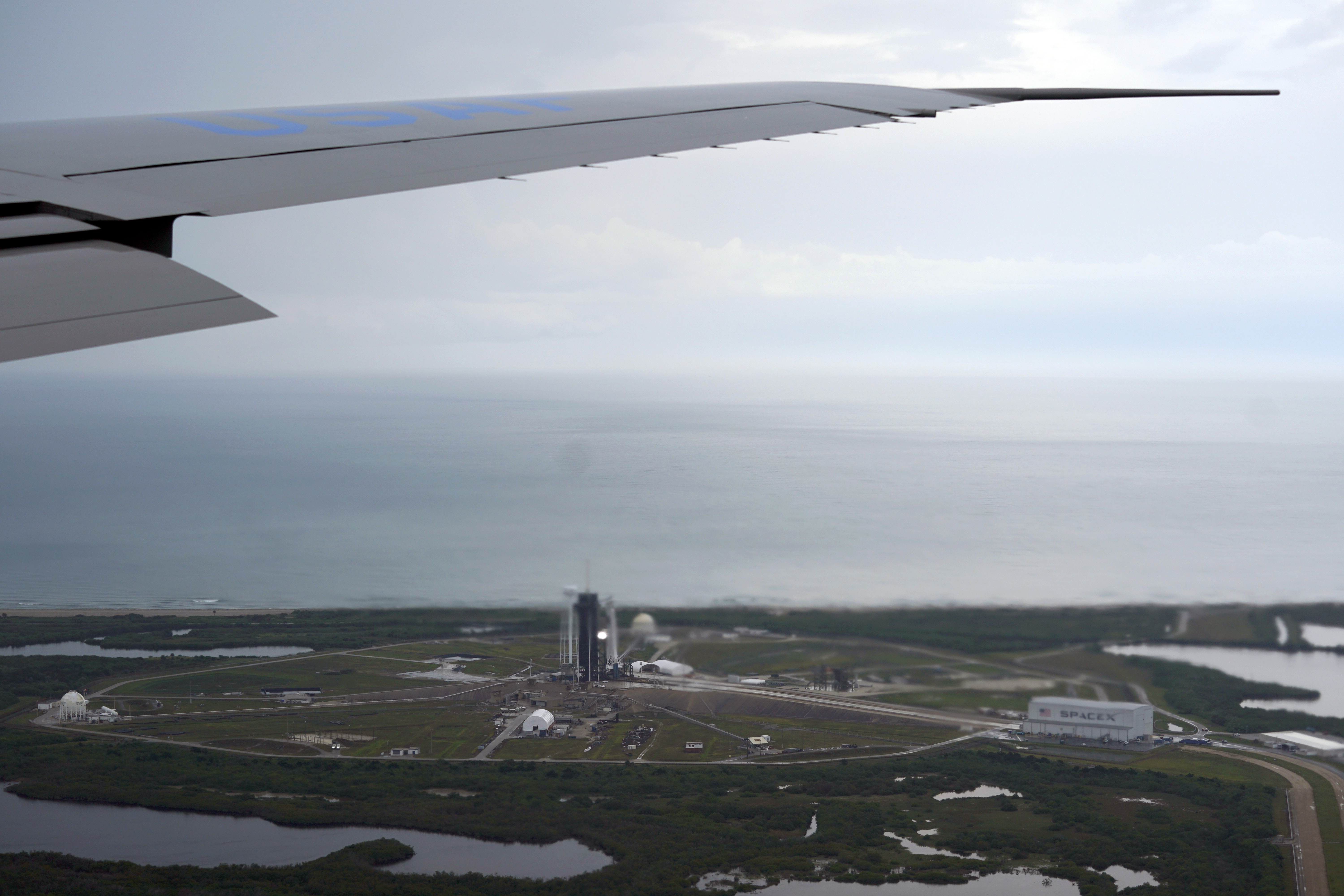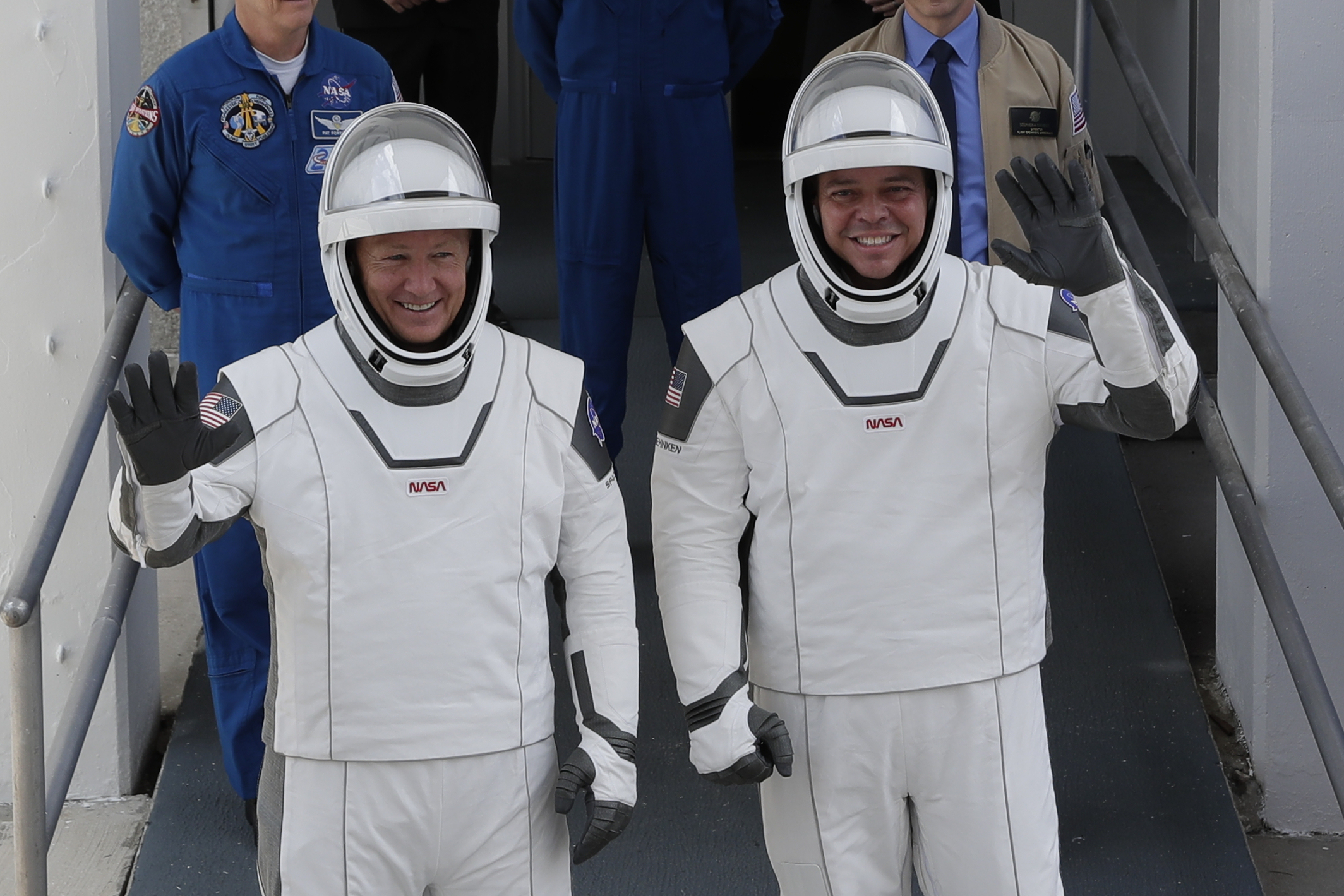On Wednesday, President Donald Trump and the first family flew to Cape Canaveral, Florida to mark the return of human spaceflight from US soil in nearly a decade. But a light yet persistent rainy drizzle foiled the launch—for now.
The launch, postponed until Saturday, will be momentous. Since NASA ended its own Space Shuttle Program in 2011 as a cost-saving measure, its astronauts have had to travel to Russia to train on its Soyuz spacecraft—to the tune of $86 million each, CNN reports.
NASA’s pivot to the private sector stems from the hope of keeping such costs down, with Boeing and SpaceX, the rocket company started by billionaire Elon Musk, competing for the honor of launching American astronauts into space.

In 2014 both Boeing and SpaceX were awarded NASA contracts at $4.2 and $2.6 billion respectively. Both Boeing and SpaceX are required “to be capable of two flights per year through 2024,” a November 2019 NASA report cites.
With Boeing suffering setbacks to its Starliner spacecraft, all eyes are on SpaceX and its Crew Dragon as it attempts to embark once again.
Equipped with seven seats, the Crew Dragon, a gumdrop-shaped capsule atop a Falcon 9 rocket, engenders the possibility of a new frontier—commercial, privatized space travel. But for now, NASA holds a monopoly on the seats.
For the current mission, two seats aboard the Crew Dragon cost NASA approximately $55 million each, significantly cheaper than farming it out to the Russians, the NASA report cites. If the Crew Dragon launch succeeds, SpaceX will ferry four astronauts to the space station later this year.
Close friends since the two were selected to become astronauts in 2000, former Air Force Col. Robert Behnken and Marine Corps pilot Douglas G. Hurley were chosen to be the two-man crew of SpaceX in 2018. The current mission, called Demo-2, originally intended to take off in 2019, but delays in development of the Crew Dragon postponed these plans.
Thank you everyone for your support today for #LaunchAmerica! 🙌 We hope to see you Saturday, May 30 at 3:22 p.m. ET for our next launch attempt. Live coverage begins at 11 a.m. ET on https://t.co/0tGwqaSya3.
In the meantime, get to know @Astro_Doug and @AstroBehnken! pic.twitter.com/RlTzaatLpB
— NASA's Johnson Space Center (@NASA_Johnson) May 27, 2020
As such, NASA currently finds itself short-handed at the International Space Station (ISS), with astronaut Christopher J. Cassidy alone with two Russian counterparts, the New York Times reports. Originally scheduled to stay two weeks at the ISS, Behnken and Hurley told reporters last week that they expect to spend one to three months in space in an effort to assist Cassidy.
Weather permitting, the liftoff is scheduled for this Saturday, May 30 at 3:22 p.m., with SpaceX in charge of the launch and NASA consulting.
According to NASA, the launch must occur at this precise moment in order to align with the ISS’s orbit.
Blasted into space, Behnken and Hurley will spend 19 hours aboard the spacecraft before arriving at the space station.
"It was a great day for NASA, it was a great day for @SpaceX. I think our teams worked together in a really impressive way, making good decisions all along." Administrator @JimBridenstine explains why the scrub today was the best decision to keep the #LaunchAmerica crew safe: pic.twitter.com/MVV85ZFx42
— NASA (@NASA) May 27, 2020
And if, upon watching the space launch on Saturday, you find yourself muttering, “Bond, James Bond,” know you are not alone. Much ado has been given about the design of Behnken and Hurley’s space suits.
Bypassing the usual Air Force and Navy contractors, Musk hired costume designer Jose Fernandez, whose work includes “Batman v Superman,” “The Fantastic Four,” “The Avengers,” and “X-Men II.”
In 2016 Fernandez told Bleep magazine that Musk “kept saying, ‘Anyone looks better in a tux, no matter what size or shape they are.’” With that in mind, the sleek space suit prototypes were then designed to evoke the images of a tux and then reverse engineered to meet space travel requirements, according to the New York Times.
So this Saturday, as Behnken and Hurley lift off in their futuristic space suits, perhaps lift up a martini, shaken, not stirred, for the future of space travel.

